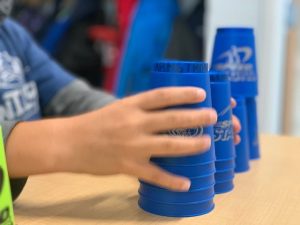Division 5 has just started learning speed stacking, and last week we participated in the Stack Up! annual event. This event aims to set the world record for the most stackers at the same time in different parts of the world. The goal this year was 775 000!
Speed Stacking is a relatively new sport that is based on… that’s right… stacking cups!
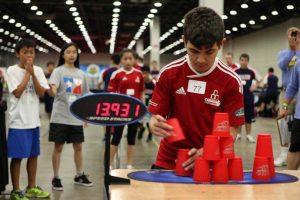 Sport stacking, also known as cup stacking or speed stacking, is an individual and team sport that involves stacking 9 or 12 (usually 12) specially designed cups in pre-determined sequences as fast as possible. The cups are specially designed to allow for speedier times, so the sport doesn’t work so well with regular cups. People of all ages and from all over the world compete in sport stacking.
Sport stacking, also known as cup stacking or speed stacking, is an individual and team sport that involves stacking 9 or 12 (usually 12) specially designed cups in pre-determined sequences as fast as possible. The cups are specially designed to allow for speedier times, so the sport doesn’t work so well with regular cups. People of all ages and from all over the world compete in sport stacking.
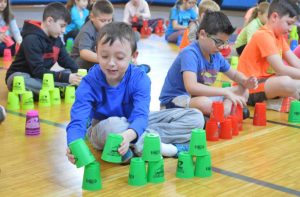
Just as with any sport, there are particular rules that guide speed stacking. Division 5 is just beginning developing some basic skills around how we handle the cups, and some of the stacking fundamentals needed to be successful with this sport. Developing muscle memory is a big part of learning any new physical skill, and we are learning that we must start slow in order to achieve this. One of the rules of cup stacking is that the player must use alternating hands in order to set up each cycle of cups–this action of alternating hands actually strengthen the right and left brain connection. There are also competition events such as partner stacking where each person performs the actions of either the right or the left hand. It’s important to start with the fundamentals of a sport before adding in speed and power.
If you want to learn more, check out these official speed stacking YouTube videos.
![]() Families have the opportunity to buy their own set of stacks from Speed Stacks Canada. Just click on the “Group Order” image to go to the ordering site. Purchasing a set through this link helps us get more speed stacking supplies for our school.
Families have the opportunity to buy their own set of stacks from Speed Stacks Canada. Just click on the “Group Order” image to go to the ordering site. Purchasing a set through this link helps us get more speed stacking supplies for our school.
Ordering closes on November 30.
Happy stacking!
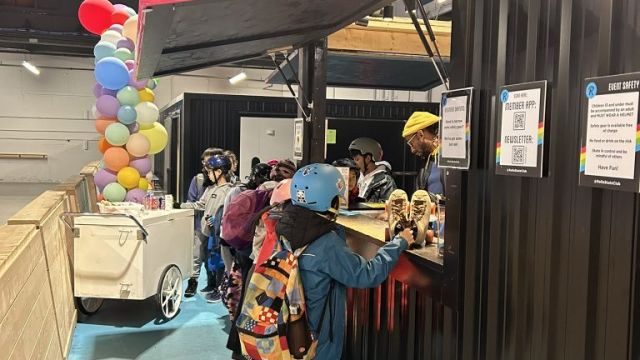

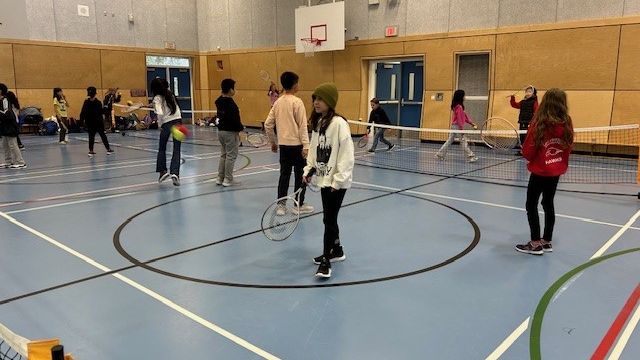
 Division 5 is beginning to explore digital literacy and citizenship skills. We will be learning how to use technology in helpful ways, about our digital footprints and online privacy, how we interact with others, how to find information safely, and how we can keep a healthy balance between media and non-media in our lives.
Division 5 is beginning to explore digital literacy and citizenship skills. We will be learning how to use technology in helpful ways, about our digital footprints and online privacy, how we interact with others, how to find information safely, and how we can keep a healthy balance between media and non-media in our lives.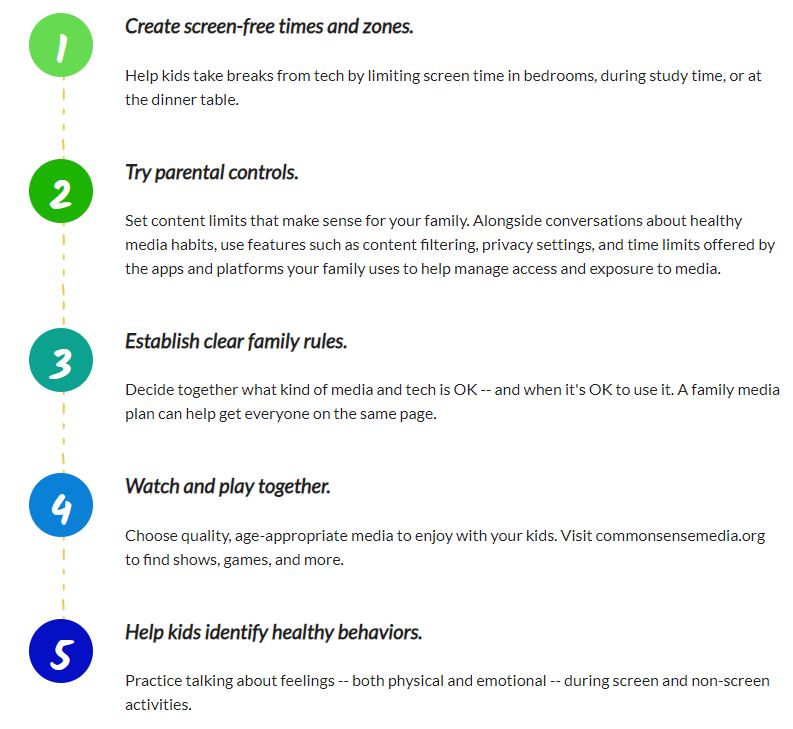

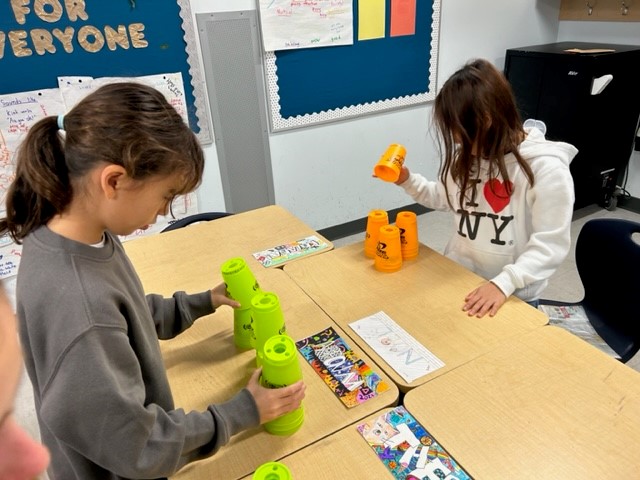 Sine the beginning of the year, Division 5 has been working on their Speed Stacking skills. It is a relatively new sport that is based on… that’s right… stacking cups!
Sine the beginning of the year, Division 5 has been working on their Speed Stacking skills. It is a relatively new sport that is based on… that’s right… stacking cups! Just as with any sport, there are particular rules that guide speed stacking. Division 5 has been learning these rules, and developing their muscle memory by learning the Competition Cycle (3-6-3, 6-6, 1-10-1). One of the rules of cup stacking is that the player must use alternating hands in order to set up each cycle of cups–this action of alternating hands actually strengthen the right and left brain connection. There are also competition events such as partner stacking where each person performs the actions of either the right or the left hand.
Just as with any sport, there are particular rules that guide speed stacking. Division 5 has been learning these rules, and developing their muscle memory by learning the Competition Cycle (3-6-3, 6-6, 1-10-1). One of the rules of cup stacking is that the player must use alternating hands in order to set up each cycle of cups–this action of alternating hands actually strengthen the right and left brain connection. There are also competition events such as partner stacking where each person performs the actions of either the right or the left hand. Division 5 has been focused on learning the cycle carefully to avoid fumbles and falls. Once students are familiar and fluent with the cycle, they will be developing their speed! It’s important to start with the fundamentals of a sport before adding in speed and power.
Division 5 has been focused on learning the cycle carefully to avoid fumbles and falls. Once students are familiar and fluent with the cycle, they will be developing their speed! It’s important to start with the fundamentals of a sport before adding in speed and power. Division 3 is learning to identify and reflect on the habits they have with digital media and devices.
Division 3 is learning to identify and reflect on the habits they have with digital media and devices.
